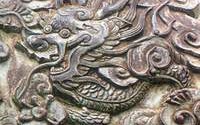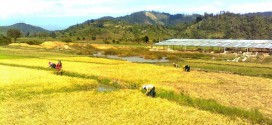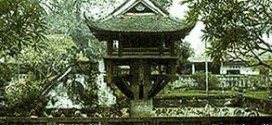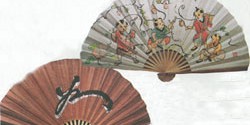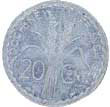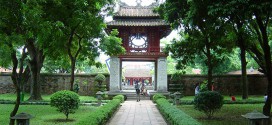What is To He? To He, a traditional Vietnamese toy has been captivating children for generations with its vibrant colors and malleable texture. Derived from the Vietnamese term for “toy figurine,” To He is a cherished plaything that holds cultural significance and offers a unique and delightful experience for young ones. The Art of To He Making The making of …
Read More »Vietnamese Culture Values
Tale of Vietnamese Dragon
In Asian myths, no creature is as impressive as the dragon. For Vietnamese peasants, the dragon was a vivid symbol of the fourfold deity-clouds, rain, thunder and lighting.
Read More »Vietnamese Traditional Stilt Houses
Vietnam's traditional stilt houses complement their natural settings: simple and unimposing.
Read More »Vietnamese Traditional Toys
A glimpse into the Vietnamese traditional toys give us an image of Vietnam's past culture.
Read More »Rice in Vietnam
Many Vietnamese people say their country looks like two rice baskets placed at two ends of a pole.
Read More »Beauty of the Ancient Architecture
Apart from Hoi An, Hanoi is Vietnam's only city where ancient streets can be found. These streets still keep the same appearance that they had at the end of 19th century. According to historical sources, they have been the true core of Thang Long since its foundation nearly a thousand years ago.
Read More »Paper Fan
In Vietnamese tradition, the paper fan was an indispensable item in times of yore, one of eight prized objects in every household - the others being a gourd bowl, a quill pen, a Ty Ba (four-string guitar), an orchid, a chess-set, a sword and a feather-duster.
Read More »Vietnamese Money Through Time
In this article, you will learn Vietnam Dong history from ancient time to date.
Read More »Vietnamese Spiritual Life
In Vietnamese society, people have a habit of being superstitious and this has been part of their daily life. On such occasions as marriages, funerals and open new house, people will try to choose a propitious date.
Read More »Educational System of Viet Nam in The Past
Because of 1000 years under the cruel domination of Chinese, there are no records which indicate that a formal education system in Vietnam was established Before Christ or even under the Chinese conquers years from 207 BC to 939 AD.
Read More »Vietnamese Family and Social Culture
Before the late 1980s, nearly all Vietnamese people lived in villages, and the cultivation of wet rice was the principal economic activity. The basic component of rural society was the nuclear family, composed of parents and unwed children.
Read More »Vietnamese Family Life
Vietnamese life is profoundly influenced by ancestor worship. Children learn at a very early age that they owe everything to their parents and their ancestors. Doing well in school and working hard honors one's parents and the family name. Respect for parents and ancestors is extended to all elders, whose life experiences are valued.
Read More »Communicating with Vietnamese
Many languages and dialects are spoken in Vietnam, but Vietnamese is the official language and the language of most people. Many older Vietnamese are familiar with French or English. Interest in English has been rising, with language schools opening throughout the country.
Read More »Vietnamese Social Relationships
The desire to achieve harmony between the self and the non-self remains an essential preoccupation of the Vietnamese in interpersonal relations outside the family group. The basic principles underlying family relationships is extended to the relationships between members of wider social groups.
Read More »Vietnamese Non-verbal Communication
As in most cultures, non-verbal communication plays an important role in Vietnamese society, sometimes to accompany and reinforce linguistic symbols, sometimes as a substitute for words.
Read More »Vietnamese Traditional Family Values
Traditional values of Vietnamese lifestyle were deeply affected by Confucian ethics. During thousand years the Chinese invaded and maintained control Vietnam, Vietnamese culture was permeated by their Confucian philosophical beliefs. This philosophy based for the existence of and extended family structure through 2,000 years of Vietnamese history.
Read More »The Vietnamese Value System
The Vietnamese value system is based on four basic tenets: allegiance to the family, yearning for a good name, love of learning, and respect for other people. These tenets are closely interrelated.
Read More » Vietnamese Culture and Tradition
Vietnamese Culture and Tradition 